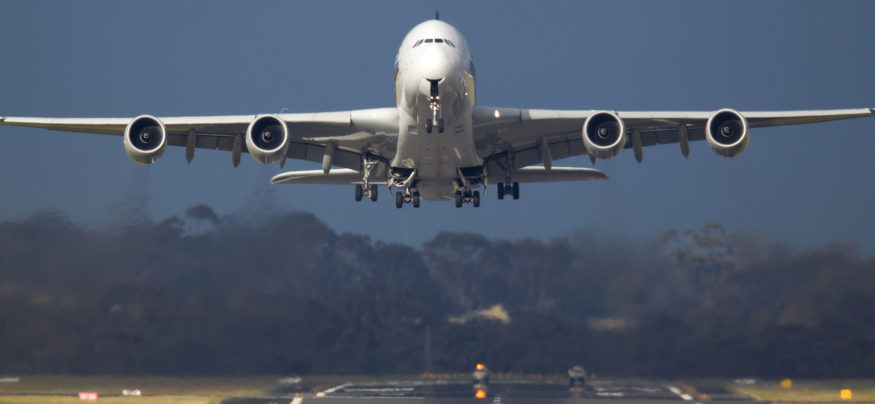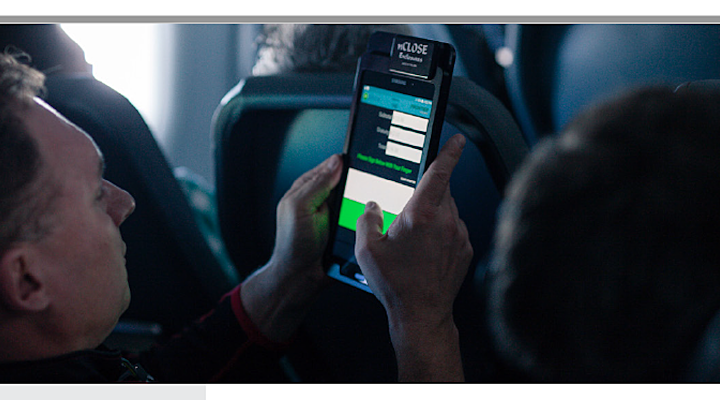As I was preparing to fly out for a four-day trip recently, I reflected on the ways mobile technology has improved the flow of aviation communication for airlines. It used to be difficult to build a mental model of what I might encounter on a long flight, but today, with only the touch of a button, I can receive a full route briefing, see areas of expected turbulence and even track the position of my inbound aircraft. The widespread use of electronic flight bags has significantly increased aviation safety by ensuring that flight crews have immediate access to important data. On the ground, crews can receive instant updates to their schedule, planned route and important memos through cellular or Wi-Fi networks.
In-flight Connectivity Enhances Safety
Emerging and evolving technology promises to significantly move the needle again on aviation safety. Data and information that could only have been updated on the ground can now be received while in flight. Several airlines are leveraging the power of onboard Wi-Fi and other connectivity options to provide real-time weather and turbulence updates. Connectivity while airborne provides additional efficiencies through fuel optimization programs and earlier maintenance notifications. It’s also traditionally been difficult to clearly communicate with the main operations center at an airline away from base, and even when communications could be established, there’s been no way to upload photos or videos of critical events while they happen. Getting the right communication to multiple departments in real time leads to more effective and consistent problem resolution, and may help avoid potentially dangerous situations.
In-flight tablets make flying a breeze.
Find out how one airline is using tablets to boost in-flight purchases. Download Now
Leveraging Technology to Improve Communication
Samsung and Comply365 have teamed up to develop transformational mobile communication tools that support time-sensitive, mission-critical functions for front-line employees. These tools, which can be accessed across many of Samsung’s mobile devices, help operators unravel complexities and elevate aviation communication by improving the speed and methods of correspondence. Through the ProChat professional chat tool, what was once a communication between individuals by phone or aircraft radio is now a dynamic electronic collaboration, where multiple stakeholders can see what’s happening in real time — through words, photos or video clips captured on a form and posted in a secure chat. And Comply365’s Forms365 solution lets users group all their forms on one device, sorting them into easy-to-navigate groups. These technology advancements allow airlines to reduce risk and provide better service during severe weather events, maintenance challenges, medical emergencies and customer service issues.
Improving In-flight Medical Care
Advances in aviation communication are moving beyond the flight deck, and now flight attendants, customer service agents and airline operations centers are able to effectively communicate during normal and non-routine operations. Comply365 recently unveiled a collaborative solution with MedAire’s in-flight medical advisory service that takes in-flight medical event management to a new level by allowing the crew to communicate directly with MedAire’s doctors, using the ProChat app to share photos and videos. More than 30 years ago, MedAire’s founder implemented an air-to-ground medical advisory that transformed aviation safety by reducing unnecessary medical diversions and improving the chance of surviving a medical emergency on board an aircraft in flight. Today, thousands of flight attendants report to work with Samsung technology, and they’ll soon be able to leverage the power of collaborative decision-making using these exciting new communication tools to further advance aviation safety.
Learn more about how mobile technology is revolutionizing the aviation industry through electronic flight bags and mobile POS technology.








